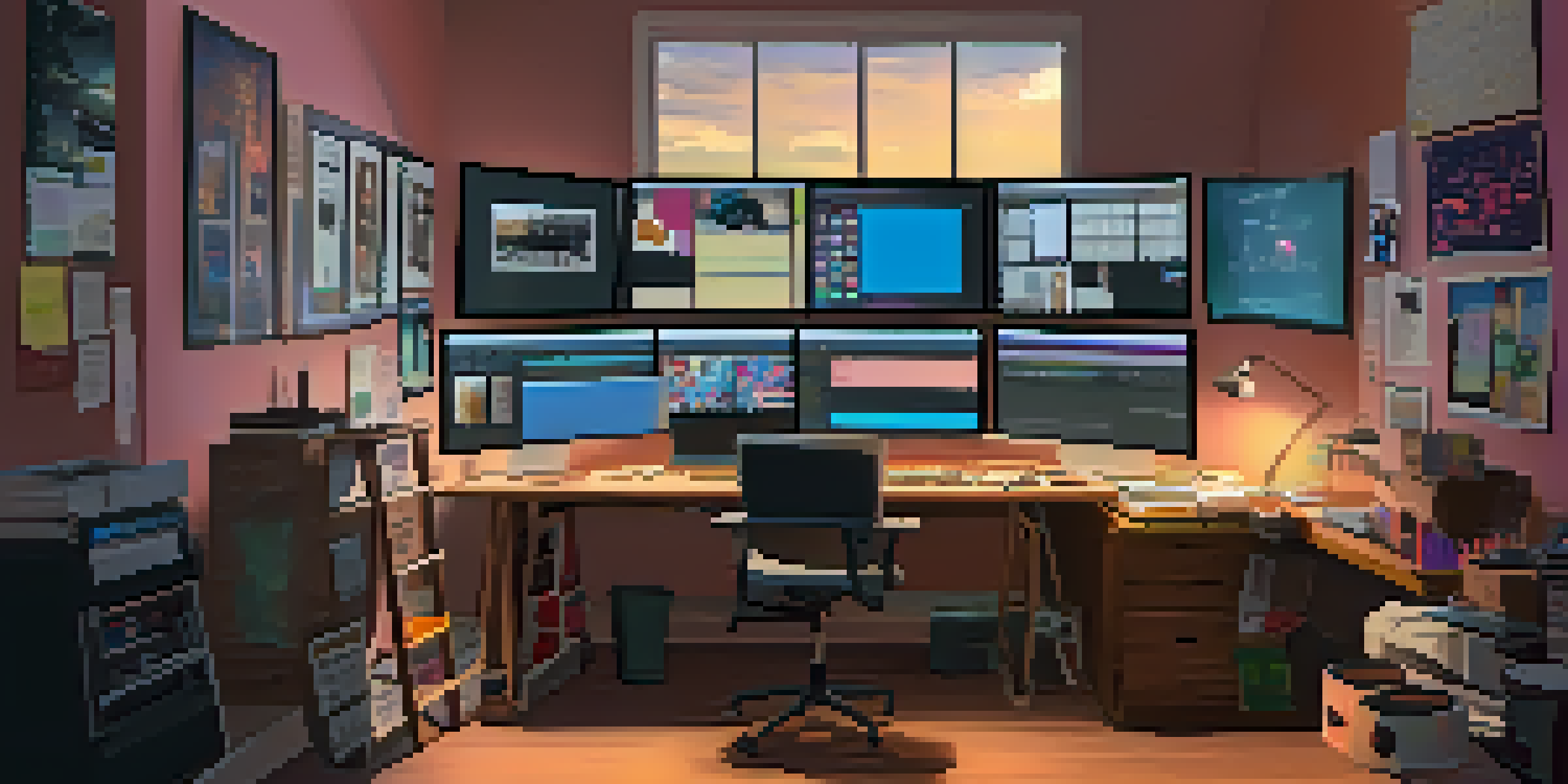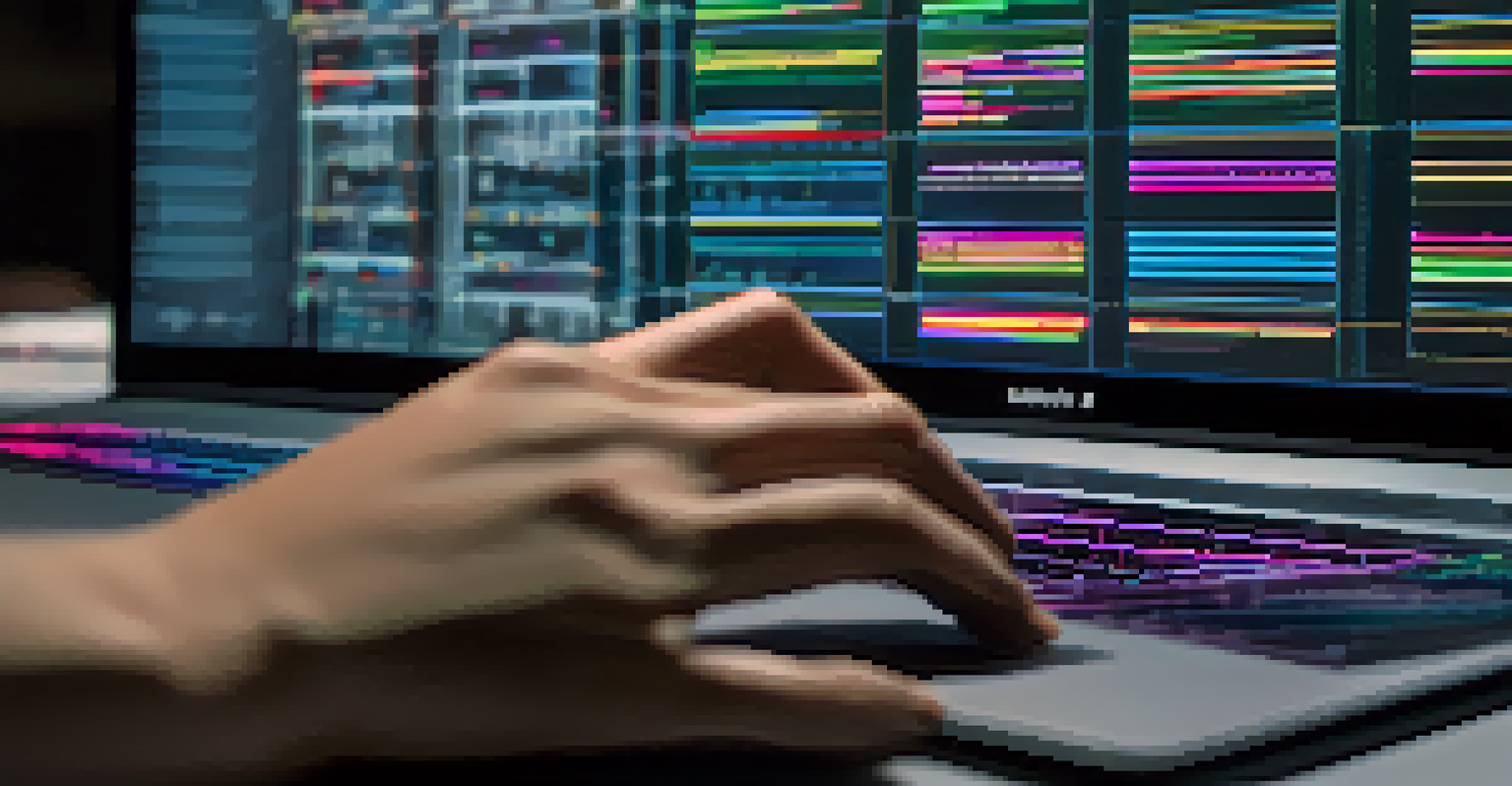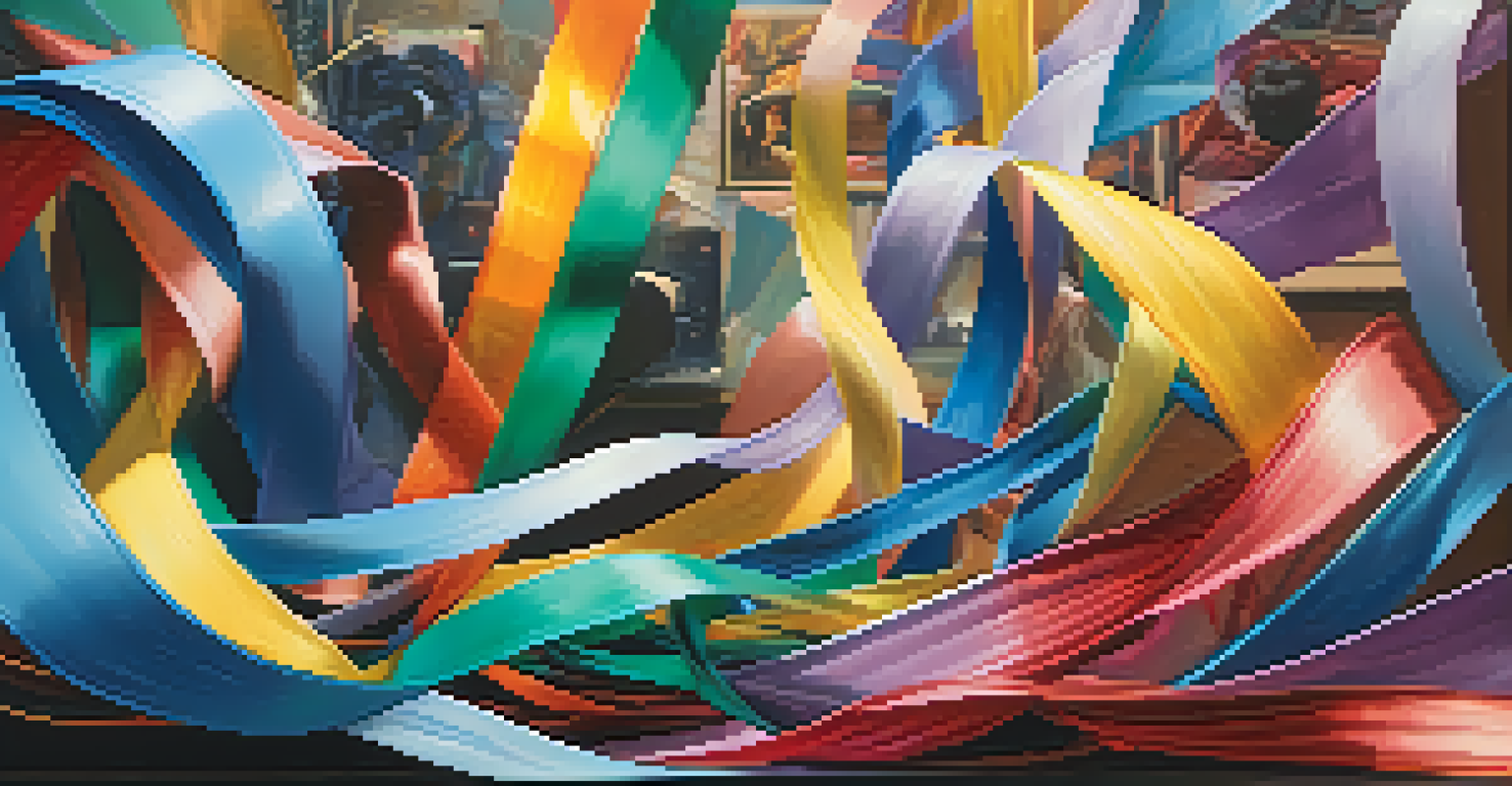Editing Rhythm: The Beat of Film and Its Emotional Pulse

Understanding Film Editing Rhythm and Its Importance
Editing rhythm in film refers to the pace at which scenes are cut and arranged. It's crucial because it dictates how viewers emotionally engage with the story. Just like music, where the tempo can shift our mood, the rhythm in editing can elevate tension or evoke laughter.
Editing is the process of selection and arrangement, a shaping of time and space to create meaning.
For instance, a fast-paced montage can create excitement or urgency, while slower cuts can deepen emotional resonance. This interplay of tempo and emotion is what keeps audiences glued to their seats. Understanding this concept is the first step in appreciating the art of editing.
Ultimately, editing rhythm acts as the heartbeat of a film, guiding viewers through the narrative. By mastering this rhythm, filmmakers can manipulate audience reactions and enhance storytelling.
The Role of Pace in Establishing Emotional Tone
Pace is a vital element that shapes the emotional tone of a film. A quick succession of cuts can generate excitement and anticipation, while longer shots often allow for reflection and connection. Think of a thrilling chase scene; rapid cuts heighten the adrenaline rush.

Conversely, a slow-paced scene can engage viewers on a deeper level, inviting them to absorb the characters' emotions. For example, in a dramatic moment, lingering on a character’s facial expressions can amplify the emotional weight. This contrast between pace and emotion creates a dynamic viewing experience.
Editing Rhythm Shapes Viewer Emotion
The rhythm of film editing influences how viewers emotionally connect with the story, much like the tempo of music can affect our feelings.
Ultimately, the right pace can transform a good film into a great one by ensuring that the emotional tone resonates with the audience. It's all about finding that perfect balance between speed and stillness.
Cutting Techniques: The Tools of Emotional Engagement
Various cutting techniques serve as tools for emotional engagement in film editing. Jump cuts, for example, can create a sense of disorientation or urgency, while fade-ins and fade-outs often signal transitions in time or mood. Each technique comes with its own emotional implications.
The best editing is the kind that you don’t notice. It’s the kind that flows seamlessly with the narrative and draws the audience in.
For instance, a cross-cutting technique, which alternates between two scenes, can build tension by showing simultaneous actions. This method keeps viewers on the edge of their seats, as they anticipate how the two threads will intertwine. Each cut is a decision that shapes the viewer’s emotional journey.
By employing different cutting techniques, editors can craft a film's emotional landscape, guiding audiences through highs and lows. The mastery of these techniques is what separates great films from the rest.
The Impact of Music and Sound on Editing Rhythm
Music and sound play a significant role in shaping editing rhythm, creating an emotional pulse that resonates with viewers. The right soundtrack can enhance the impact of cuts, aligning the visuals with auditory cues. For example, a swelling score can signal a climactic moment, urging editors to match cuts to the beat.
Moreover, sound design contributes to the overall rhythm by providing atmospheric context. The use of silence can be just as powerful, allowing moments to breathe and affording audiences time to absorb the emotional weight of a scene. This interplay between sound and editing rhythm creates a cohesive experience.
Pacing Creates Emotional Engagement
The pace of cuts in a film can evoke excitement or reflection, balancing speed and stillness to enhance the overall emotional tone.
When directors and editors collaborate effectively on sound and music, the emotional journey becomes more immersive. It's this synergy that draws viewers deeper into the film's narrative, making every moment feel intentional.
Emotional Arcs: Building and Releasing Tension
An essential aspect of editing rhythm is its ability to build and release emotional tension throughout a film. Editors strategically place cuts to create peaks and valleys in emotion, guiding the audience through an engaging narrative arc. This rollercoaster effect keeps viewers invested in the characters and story.
For instance, in a suspenseful thriller, rapid cuts can elevate anxiety just before a climactic reveal. Then, a sudden switch to a long take can allow viewers to process the aftermath. This rhythm of tension and release mirrors the natural ebb and flow of human emotions.
By carefully crafting these emotional arcs, filmmakers can ensure that audiences feel a genuine connection to the story. This manipulation of tension through editing is what makes film a powerful medium for storytelling.
Cultural Influences on Editing Rhythm and Style
Cultural context significantly influences editing rhythm and style, shaping how stories are told across different societies. For example, Hollywood often employs a fast-paced editing style that caters to mainstream audiences, while other cultures may embrace slower, more contemplative rhythms. These stylistic choices reflect societal values and storytelling traditions.
In Japanese cinema, for instance, you might find longer takes that invite viewers to immerse themselves in the characters’ emotions. This contrasts with the quick cuts typical of American action films. By recognizing these differences, viewers can appreciate the unique emotional resonances each culture brings to its stories.
Cultural Context Affects Editing Style
Editing rhythm and style vary across cultures, reflecting different storytelling traditions and emotional resonances in film.
Understanding these cultural influences enhances the viewing experience, allowing audiences to grasp the nuances of emotional expression across diverse narratives. It highlights the universal nature of storytelling while celebrating regional differences.
The Editor's Role: Crafting Emotional Journeys
The editor's role in shaping a film's emotional journey cannot be overstated. They are the storytellers behind the scenes, weaving together visuals and sounds to create a cohesive narrative. An editor’s choices dictate the rhythm, pacing, and emotional impact of each scene, ultimately influencing how the audience experiences the story.
For instance, the way an editor chooses to cut a romantic scene can either heighten the tension or create a sense of intimacy. A skilled editor knows when to linger on a moment or when to move quickly to maintain engagement. This decision-making process is both an art and a science.

Through thoughtful editing, they facilitate the emotional connections that resonate with viewers long after the credits roll. The editor's expertise is essential in crafting films that leave a lasting impression.